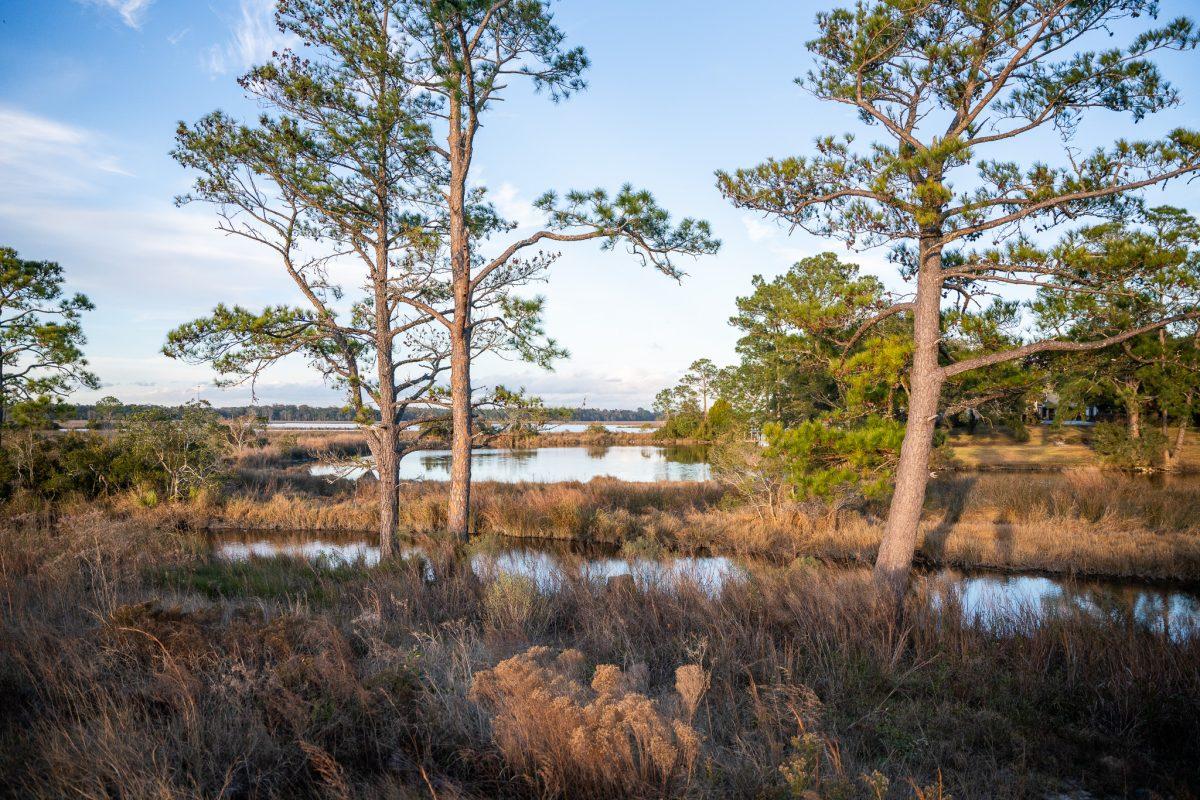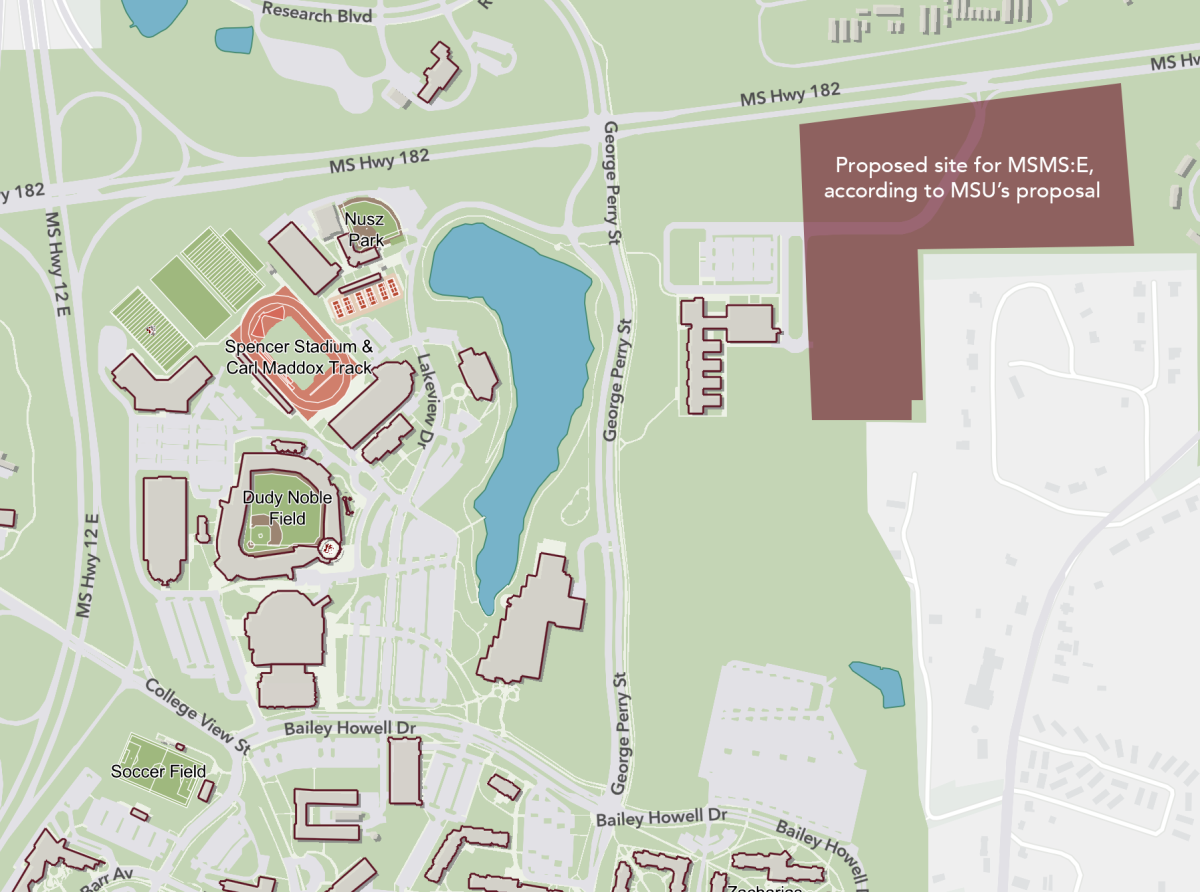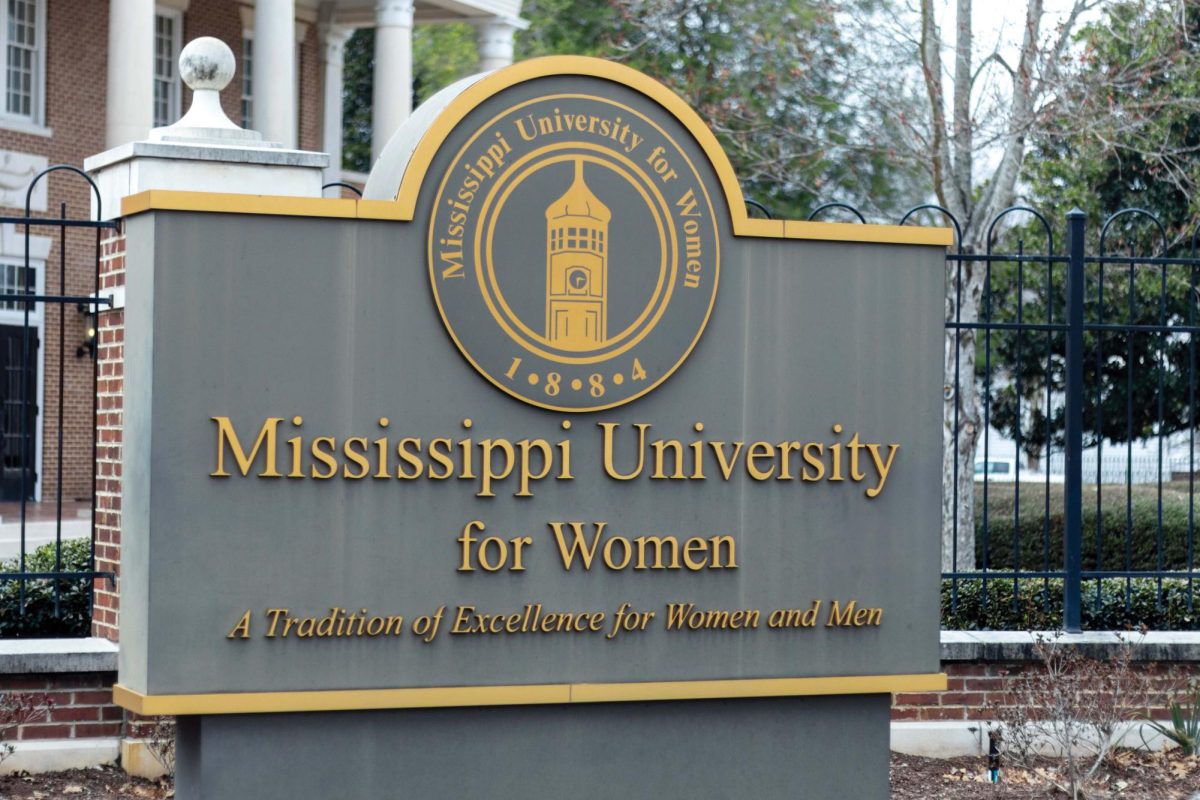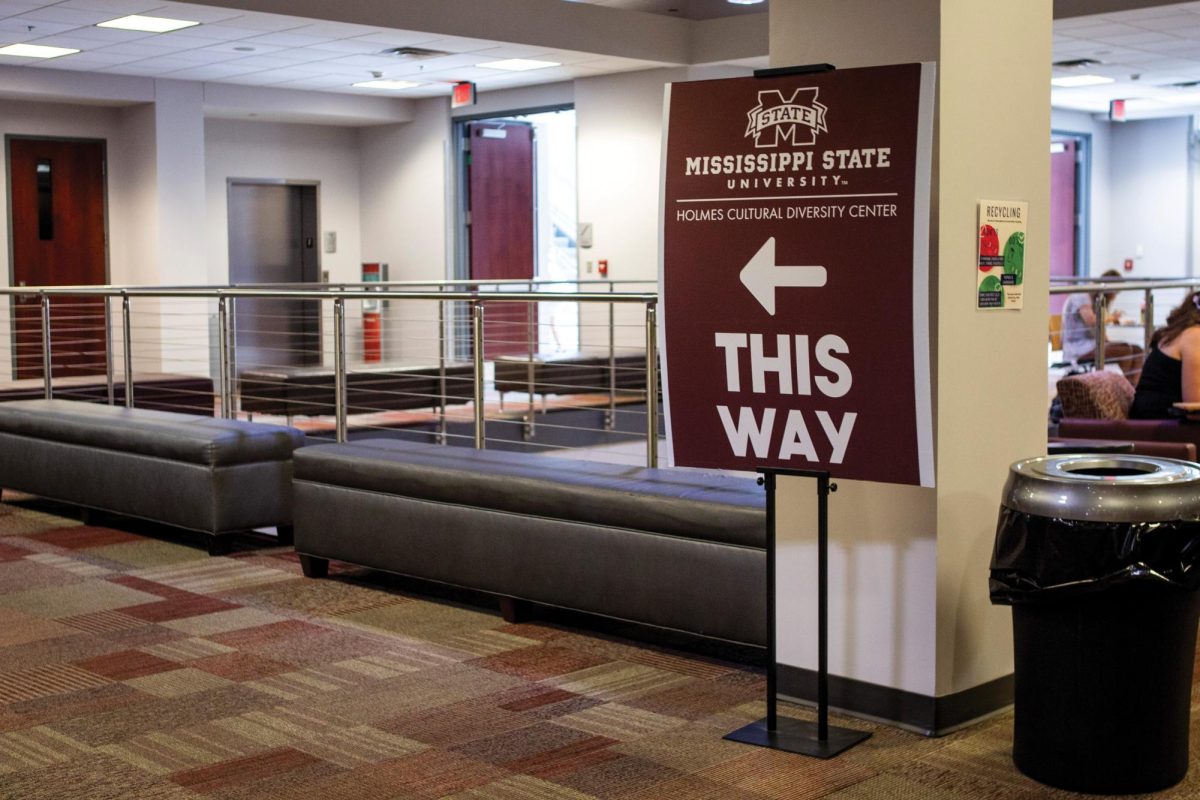2019 was the United States’ second wettest year on record, according to the National Oceanic and Atmospheric Association. Intense rainfall in the Mississippi Valley caused the Mississippi River to swell — spelling disaster for the Mississippi Gulf Coast.
As slugs of stormwater snaked downstream, the U.S. Army Corps of Engineers was compelled to open the Bonnet Carre Spillway, a flood control structure that protects New Orleans from flooding. The spillway was opened once in 2018, twice in 2019 — the first time it had ever been opened twice in one year — and again in 2020, marking the first time the spillway had been opened in three consecutive years.
In 2019, six trillion gallons of freshwater surged through the spillway and into Lake Pontchartrain, making its way into the Mississippi Sound and the Gulf of Mexico. Freshwater flowed for 123 days, almost twice as long as any previous opening. The Mississippi Department of Marine Resources claimed the freshwater release contributed to $150 million in lost revenue from oyster, shrimp, crab and finfish landings in an ecological disaster, leading the U.S. Department of Commerce to allocate $21 million in federal aid to Mississippi.
In the first 45 years of its operation, the spillway opened three times. In the last 45 years, it has opened 10 times. Given an increased rate of spillway openings and data that suggests a more dynamic climate, Mississippi researchers are working to increase the Mississippi Gulf Coast’s resiliency to effects that could be influenced by anthropogenic climate change.
According to the NOAA, the average global surface temperature of January through September 2023 was the warmest on record for that period, and there is a 99% probability that 2023 will rank as the warmest on record.
These warm temperatures and a lack of rainfall resulted in the expansion of drought coverage and intensity across parts of the Mississippi Valley, leading to record-low water levels along parts of the Mississippi River for the second year in a row, causing barges and ships to run aground.
According to NASA, Mississippi River levels in Memphis, Tennessee, reached nearly -10.81 feet on Sept. 23, 2023, nearly breaking the historic low. Without the flow of freshwater, saltwater makes its way upriver. According to the Associated Press, saltwater made its way toward Louisiana water treatment plants upstream, forcing action to barge freshwater to water intakes.
Despite recent drought conditions, higher global temperatures have created a generally wetter United States. According to NOAA, a warmer atmosphere can hold more water vapor, and an atmosphere with more water vapor can yield more precipitation.
A recent study from the First Street Foundation found that flooding from heavy rainfall events has become increasingly more probable and severe in the United States due to climate change. The study also revealed that rainfall events that were thought to occur only once every hundred years are now occurring with far greater frequency.
Ecology between extremes
Estuaries, where freshwater rivers meet the sea, provide shelter, food and nursery grounds to countless wildlife species, including commercially significant fish species. The Mississippi Sound is one such estuary and is essential to the biodiversity of Mississippi and the Gulf of Mexico.
Eric Sparks, director of the Mississippi State University Coastal Marine Extension Program, said Mississippi’s coastal ecology has faced a shifting extreme between high rainfall and high freshwater levels, and low rainfall and low freshwater levels in recent years.
Sparks said that during a drought, the soil is drier, making it more susceptible to erosion. Without rainfall, saltwater ebbs further into coastal marshlands, stressing estuarine organisms. In Back Bay Biloxi, seagrass species have gone dormant, waiting for fresh water to return. Saltwater fish are being caught closer to the coast.
As water temperatures rise, tropical fish — such as the invasive lionfish — move into waters off the Gulf Coast. Higher water temperatures coupled with nutrient runoff from the Mississippi River fuel large algal blooms, and as these algae die off, they create hypoxic zones that prove fatal to wildlife.
With higher temperatures and more carbon dioxide in the atmosphere, more carbon dioxide enters the Earth’s oceans, increasing pH levels in a process called ocean acidification. More acidic oceans can lead to reproductive issues and can erode the structure of certain organisms.
Sparks said that these organisms have adapted to withstand environmental extremes, but little is known about the ecological consequences if conditions push these organisms past their limits.
“We’re going to see more of those extremes either way, and the ecology is adapted to handle this certain range of things – which is a wide range because we live in an area where hurricanes and other stuff happens – but I think we’re pushing the limits on that,” Sparks said. “The range of things that can happen is expanding, and I think we’re going to have a lot of impacts that we didn’t know could be impacts because we’ve never tested what’s well beyond what’s naturally possible.”
An adapting Gulf Coast
On a warm day in October, Sparks went out for a shoreline assessment. A Woolmarket, Mississippi, resident was worried about rising water levels in his backyard and feared serious flood damage. His high-end, waterside community was in a flood zone.
“He’s like, ‘What do I do?’ I’m like, ‘Sell your house and move. There’s not much you can do here for this,’” Sparks said. “He definitely did not like me saying that, but at the same time, he understood with someone talking to him. I could see it just sinking into his head. I wouldn’t be surprised if he puts the house on the market next week. There’s no amount of engineering that’s going to fix this.”
According to NOAA, sea levels on the Gulf Coast are projected to rise 14-18 inches in the next 30 years. Sea level rise will create a profound shift in coastal flooding by causing tide and storm surge heights to increase and reach further inland. By 2050, “moderate” (typically damaging) flooding is expected to occur, on average, more than 10 times as often as it does today. In September 2023, ten named storms were active in the Atlantic during September, which tied 2010 and 2020 for the most on record.
“Particularly folks that live inland, they’re like, ‘Whatever, the waters up this is much more,’ but it’s a big deal. That’s the difference between whole neighborhoods flooding or not, or whole wetlands being drowned or not because here we have a very small tidal range,” Sparks said. “That’s like putting another tide on top of the tide. Things have adapted here based on not having to deal with twice the amount of water.”
To combat erosion, researchers and engineers have begun to leverage the natural adaptability of shoreline ecosystems. The MSU Coastal Marine Extension Program works with Mississippi coastal communities on “living shoreline projects,” introducing natural materials and native plants in the place of traditional bulkheads — walls put up to mitigate erosion.
These living shorelines filter pollutants and provide necessary habitats for estuarine species, and unlike bulkheads, they do not contribute to erosion downstream. There is ongoing MSU research to explore to what extent these native grasses can tolerate having sediment dumped on them so that these erosion-preventing grasses can “scoot up” in the soil to survive sea level rise.
In the face of sea level rise, the U.S. has made direct interventions to protect coastal communities. After landfall of Hurricane Katrina in 2005, the United States Army Corps of Engineers (USACE) Mobile District assembled a specialized team that oversaw what would become the Mississippi Coastal Improvements Program (MSCIP).
Now called the Coastal Resiliency Program, it has accomplished hundreds of millions of dollars in transformative projects and is one of the largest coastal storm risk management programs in USACE.
Justin McDonald, Coastal Resiliency Program manager at the USACE Mobile District, explained the purpose of the team.
“It was developed simply to enhance the coast of Mississippi’s resilience toward sea level change and saltwater intrusion, and to do ecosystem restoration work,” McDonald said. “The model we developed – we call it the ‘line of defense’ concept – is basically: restore the barrier islands, the first line of defense, two: protect the mainland coast, and three: protect the Mississippi Sound and the estuary system you have there.”
The barrier islands of Mississippi, Petit Bois, Horn, East Ship, West Ship and Cat Island are a line of natural defense, taking the brunt of storm energy. In a massive project, USACE fortified the barrier islands with new sediment, restoring 1,150 acres of critical coastal habitat and ensuring stable salinity inflows from the Gulf of Mexico.
In their second line of defense, USACE is invested in fortifying beaches and marshland. After the Bay St. Louis Seawall was destroyed in Katrina, USACE resigned and constructed a new, 5,600-foot seawall. In 2013, it completed a restoration of Deer Island off Biloxi’s coast its natural marshland, providing storm defense to Biloxi and natural habitat.
Inland, USACE is invested in several projects focused on ecosystem restoration and community resilience.
Several planned ecosystem USACE projects are focused on buying out abandoned communities to transform them back into managed natural habitats. Hundreds of acres of pine savannah wetlands have been restored in these projects.
In Gulfport, Mississippi, a low-income, minority community called Forrest Heights is in a flood zone. When nearby Turkey Creek is in a food stage, water stands in the streets. Half of the community is required to purchase flood insurance, and on the Gulf Coast, insurance premiums are rising.
“The city of Gulfport actually brings in pumps to pump the water out. They look at the church across from the community, on the other side of the creek, and turn the pumps on based on the water level of the church,” McDonald said. “Our project is to raise a levee to reduce or eliminate the need for flood insurance and install permanent pump systems.”
Organizations all along the Gulf Coast are committed to enhancing resilience on the community level. The Program for Local Adaptation to Climate Effects: Sea Level Rise (PLACE: SLR), is a partnering organization with MSU that works to enhance the Gulf Coast’s resiliency to climate change.
Jolie Kavanagh is an education and outreach specialist for PLACE: SLR and believes that investing in community outreach is essential in combating the effects of climate change.
“We really try to push it towards educating the youth because it’s really going to be affecting them in the future,” Kavanagh said. “It starts by just asking them, ‘Hey, you want to play a game?’ And then they learn about sea level rise the next 50 years or they live learning about living shorelines and how they’re better than bulkheads — and just getting them involved.”
SLR is involved in a current project to address chronic flood risk and resilience issues in the redevelopment plans for southeast Biloxi, Mississippi. The Resilient East Biloxi project hosts community leader training to help mitigate the future impacts of sea level rise on low-income communities.
“My great-grandparents were fishermen. My entire family has lived here – this is my home. This is beautiful Biloxi in my eyes because it’s where we came back with the pelicans almost going extinct,” Kavanagh said. “There are ways that we can progress as long as we actually take action, and it’ll be good for my nieces and nephews that are growing up here. So, it’s better for the future if we at least try.”













